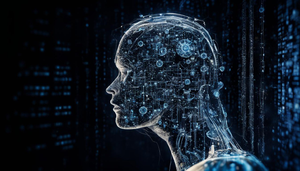Supervised Learning

Supervised learning is a fundamental concept in the field of machine learning, where an algorithm learns from labeled training data to make predictions or decisions. It involves training a model on input-output pairs, where the algorithm tries to learn the mapping function that can predict the output for new, unseen inputs.
Key Concepts:
Input Data: In supervised learning, we have a set of input variables (features) denoted as (X) and corresponding output variables denoted as (Y). The goal is to learn how input features relate to the output labels.
Labeled Training Data: The training dataset consists of paired input-output examples used to train the model. Each example in the dataset has both input and correct output provided.
Model Training: During training, the model learns from patterns in the given data by adjusting its parameters iteratively to minimize the difference between predicted outputs and actual outputs.
Prediction: Once trained, the model can be used to predict outcomes for new or unseen data points based on its learned mapping function.
Types of Supervised Learning:
- Classification: In classification tasks, the model predicts discrete class labels for inputs.
- Regression: Regression tasks involve predicting continuous values.
Evaluation Metrics:
- For classification: Accuracy, Precision, Recall, F1 Score
- For regression: Mean Squared Error (MSE), Root Mean Squared Error (RMSE), Mean Absolute Error (MAE)
Overfitting and Underfitting:
- Overfitting occurs when a model performs well on training data but poorly on unseen data due to memorizing noise.
- Underfitting happens when a model is too simple to capture patterns in data leading to poor performance on both training and test sets.
Cross-Validation: To assess how well a model generalizes beyond its training data distribution by using techniques like K-Fold Cross Validation.
Bias-Variance Tradeoff: Balancing bias (error from overly simplistic assumptions) and variance (sensitivity towards fluctuations) in models for optimal predictive performance.
Limitations:
- Model Interpretabilty
- Data Quality & Quantity 3 .Computational Resources
Overall, supervised learning plays a vital role in various applications such as image recognition, natural language processing, recommendation systems among others by enabling machines to automatically learn rules underlying datasets through guidance from labeled instances.
This overview should give you a solid understanding of supervised learning's core concepts and significance within machine learning!
















